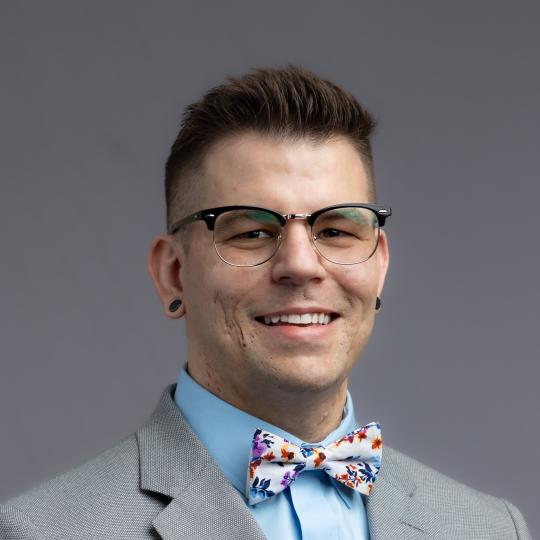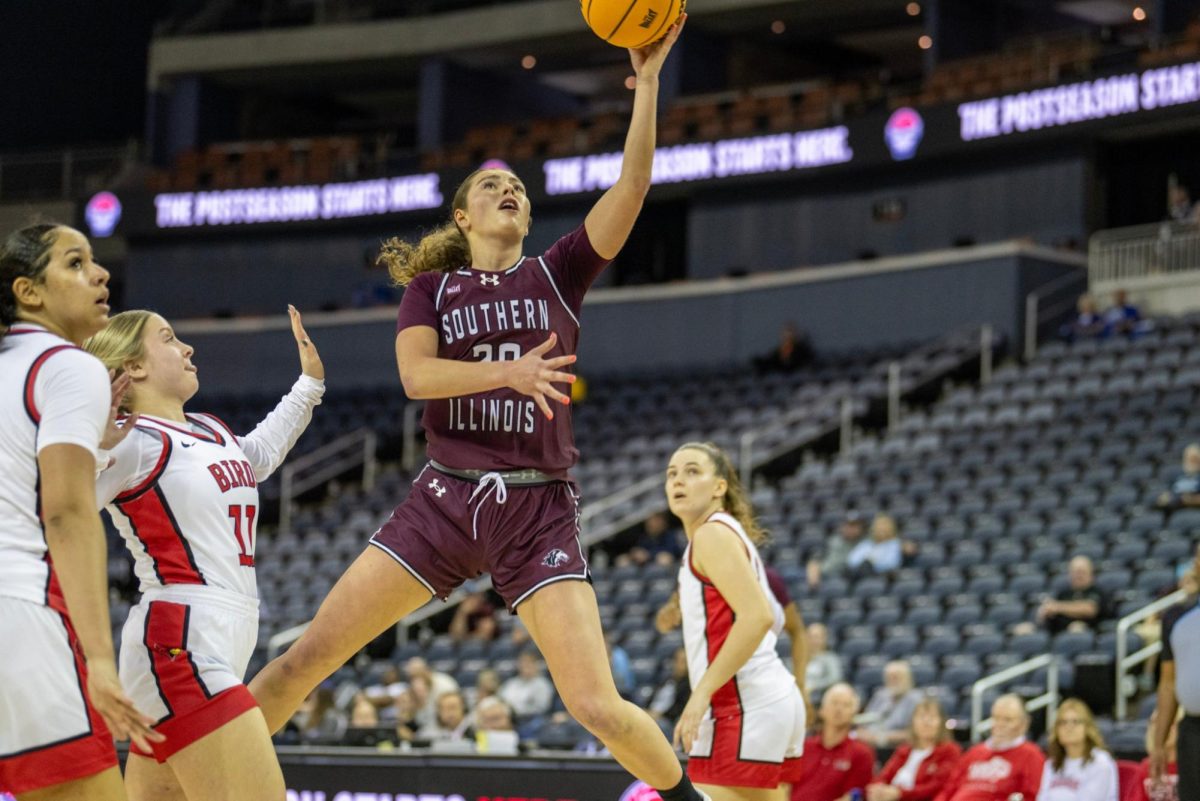SIU recognizes diversity challenge
March 27, 2013
There are 4,275 white full time employees and 1,028 full time faculty members, compared to 295 black full time employees and 81 full time faculty at SIU, according to the unversity 2011-12 Fact Book.
With 3,684 black students on campus compared to 12,799 white students some feel these numbers are unbalanced.
Advertisement
“If there aren’t that many black faculty out there, a lot of black students probably wouldn’t want to be here because they feel like nobody really cares,” said Marvin Dixon, a junior from Rockford studying speech communication. “Or they feel like higher administration doesn’t care enough to meet the needs of a high population of the students of their campus.”
Dixon serves as an academic role model through Saluki Peer Mentors, and he said black students often find it easier to take their problems to a faculty member who they feel can understand them better.
“We need more African American administrators on campus that can relate to the students and the students can confide in,” he said. “If you can confide in someone you can actually trust them, and once you trust them you know that the things they’re telling you to do are going to benefit you.”
Chancellor Rita Cheng said she doesn’t feel it is necessary for a student and instructor to be the same race to connect with them and have a successful college career.
“I don’t believe that it is necessary to have a person of the same gender or race to have an exceptional learning environment and experience on a college campus,” she said. “That being said, we are working to improve the numbers of African Americans, Latinos and women in the sciences.”
Antyne Lester, director of project upward bound, which helps high school students prepare for college, said some students experience culture shock when they arrive on campus and don’t see people in leadership roles they can identify with.
He said it’s not a race issue but a matter of who students are comfortable with.
Advertisement*
“If a student walks on campus and the prevailing ratio of everybody is white, sometimes it could be a little uncomfortable,” he said. “So they seek out black faculty, black staff, other people that look like them. That’s the natural order of human beings.”
Walter Davis, development skills training specialist in the center for exploratory student advisement, said as a faculty member, his students need him for more than just teaching. He said his job does not simply run 9-5.
“They have to have somebody that they can relate to and have that connection,” he said. “If you feel like nobody cares, after a period of time you may leave.”
According to the department of institutional research website, SIU overall retention rate from 2010-2011 was 67 percent. An Oct. 2, 2012, Daily Egyptian article reported that 30 percent of black males who attend college do not finish their degrees.
Pamela Smoot has taught African American history at the university since 1999 and serves as the Director of Student Recruitment, Retention and Outreach in the College of Liberal Arts and said at this point the university can’t afford to let any students go home.
“If there were more African American faculty, I think the university would be able to retain more African American students. That would take a lot of pressure off the few of us who have this huge number of students who come to us with their problems,” she said. “I see that the university is sort of breaking its neck to get students to come here, but we need to develop some sort of mechanism to keep them here.”
Linda McCabe Smith, associate chancellor for institutional diversity, said the students’ concern for the low numbers have not gone unnoticed. She said the administration has implemented goals and processes to make that change achievable after reviewing annual reports.
“I’ve spoken with the deans about our diversity mission on campus. Why is it that we need to look at being more diligent in our hiring practices when it comes to minorities,” she said. “It takes knowing what to look for, actually removing some of your own biases. We all have biases. We just need to recognize that we have them and make changes where we need to.”
According to the Inquiring Alumni Report compiled by the chancellor’s office, future hiring of faculty and staff should be proportional to the number of African American undergraduate students. One of the goals of the strategic plan is to create and maintain a plan for hiring, retaining and promoting diverse staff, faculty, and administrators based on state and national statistics of the qualified population.
Although state funds are continually decreased to public universities, SIU is using what they are given to work toward diversifying their faculty.
“We now have what is known as a minority revolving fund, and that money is to facilitate the hiring of minorities on campus in tenured track positions,” McCabe Smith said. “Not only are we working on recruitment, we’re working on retention, and that’s a big deal.”
Benjamin Smith, a junior from Riverdale studying speech communication, said faculty members’ added stress to worry about the status of their employment keeps faculty from helping students as much as they could.
“The fact that the few faculty members we do have we’re not properly taking care of is saying how much the administration actually feels about keeping black faculty,” he said. “These teachers are working as hard as they can to try and keep us here because they want to see us be successful, but they have to worry about whether they are getting a new contract next semester.”
Of the full-time faculty, 429 are white tenured faculty members, and 28 black, according to the 2011-12 fact book.
Getahun Benti, who teaches African history acquired his tenure in 2006 and said he does not feel this number is proportionate to the number of black students on campus.
“That number is disappointing,” he said. “If you opened a college for just those 3,600 some students, you can’t teach them with just 28 faculty members,” he said. “Not having tenured track faculty in critical positions makes us weaker as a university.”
Cheng said the number of black tenured faculty is not high enough, but it can never be high enough.
“We are not lax in our efforts, and we brought in just a handful of faculty last fall because of our hiring freeze, lack of funds and a number of them were faculty of color,” she said. “We really have made some strides but it’s never enough.”
SIU hired 78 new employees in fall 2012, and 25 were of a minority group, according to the 2012 Minorities, Women, and Persons with Disabilities report.
Davis said that inbalance makes a person question whether every option is being exhausted for these teachers to acquire tenure status.
“That requires making sure the people who are here get an opportunity to be moved up, because a lot of times people who are here and are of color, and are a minority,” he said. “What positions here have an opportunity to move up? Sometimes they hit that glass ceiling effect and somebody else gets moved up before them.”
McCabe Smith said the administration recognizes these instructors are not getting tenure, and they are working to finding out why. The Under Represented Tenure Track program is working toward answering that question.
“The chancellor has placed funds in my office to operate a program similar to a mentor program that will follow tenure-track faculty, talk about the tenure process, how to maneuver the tenure process and things of that nature,” she said. “It’s an educational program for them to help them. We see the numbers, and that is one of the reasons why we are implementing this program.”
Smoot said she thinks the success of the university is a two way street and students have to do their part as well, but change is not going to happen overnight.
“There is still a lot of work that needs to be done in terms of diversifying faculty. I believe there is money to be found when there needs to be,” she said. “They just need to go out and recruit more minority faculty for the campus, and they have to do something that’s going to make it attractive for them to come here.”
SIU’s mission statement says the university seeks to meet the educational, vocational, social, and personal needs of its diverse population of students and helping them fully realize their potential is a central purpose of the university.
Lester said students and faculty should take pride in their institution and expect diversity.
“As a black person in America, I want an America that’s as good as its promise,” he said. “As an alumni of SIU that I am proud of, I just want an SIU that’s as good as its promise, as great as the mission statement says it’s going to be. Every student that’s here should want all of it.”
McCabe Smith said even though the state labels SIU as a predominately white institution, there is no doubt work needs to be done, she said. The university’s commitment to diversity is why all of these programs are in place.
“None of these things have gone unnoticed. We are a campus that is moving into the concept of inclusivity, and that simply means those three words that I look at every day: intention, active, and ongoing engagement,” she said. “We are intentionally working on making individuals feel welcome at the university. We take action, and that’s an ongoing engagement. It’s a process.”
Advertisement









